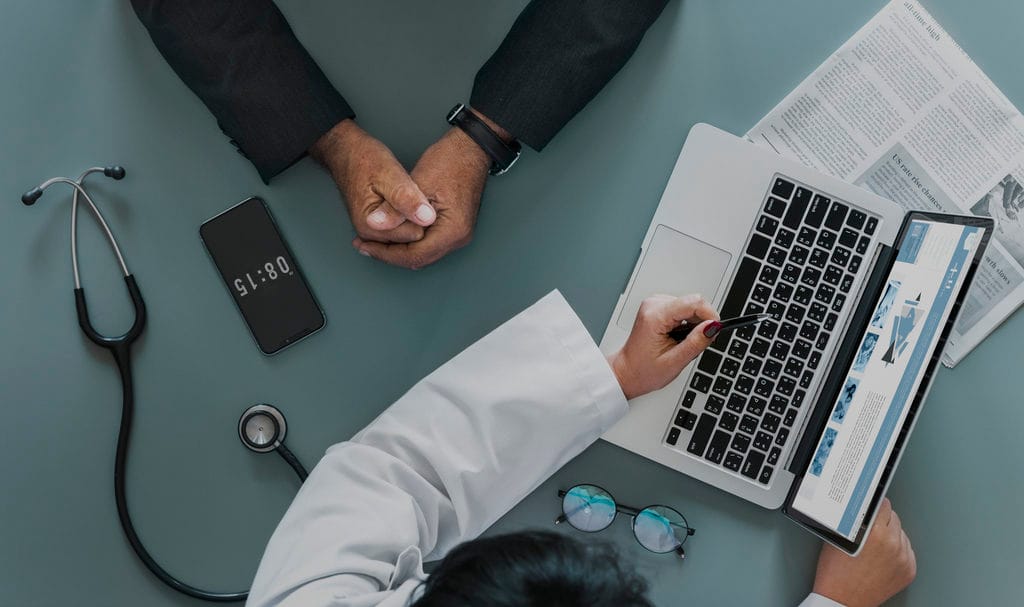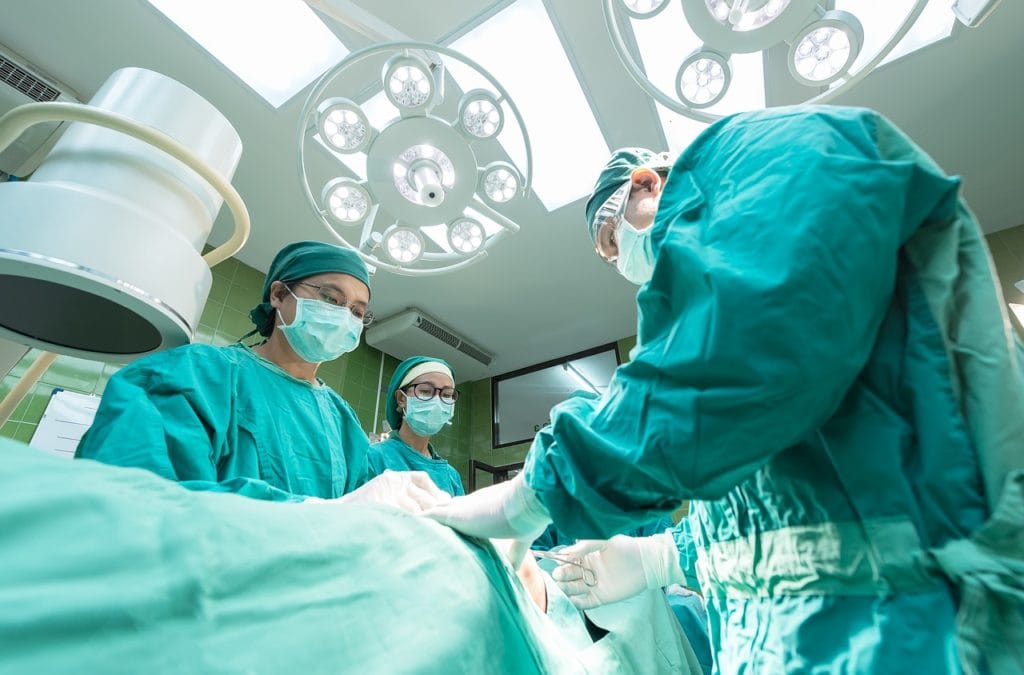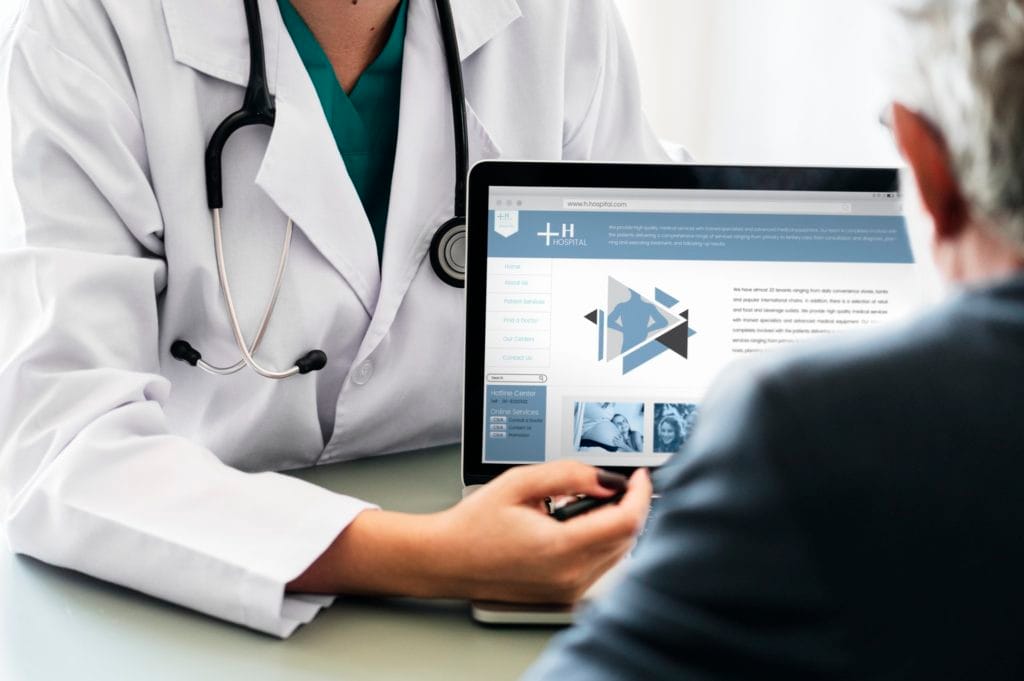
Cleansing the colon before a colonoscopy is called bowel preparation or “prep.” One of the keys to a successful colonoscopy is a clean bowel. If your colon lining is clear of solid and liquid, it allows your doctor to see any abnormalities – such as polyps and lesions – that may be present in your bowel. Although cleansing your bowel may not give you a pleasant experience, it is important that you complete the bowel prep as instructed by your doctor. Otherwise, potential complications could be missed. Your doctor may also need to repeat the exam and this could mean doing the prep all over again.
What are the types of bowel prep?
There are different types of bowel prep and your doctor will recommend the type of bowel preparation that works best for you. Bowel prep consists of two parts: diet and drinking the bowel-cleansing agent (laxative).
The diet consists of low-fiber foods and clear liquids. As for the medication, there are different bowel-cleansing agents available and your doctor will recommend the best one for your requirements. The medication is taken orally and can come in a form of liquid, powder, or tablet.
Two of the most commonly prescribed bowel prep medications are:
- Polyethylene glycol – requires a prescription and taken orally. It comes in a powder form and should be mixed with water before use. This is best for patients with kidney, heart and liver diseases.
- Sodium phosphate – requires a prescription and taken orally. It comes in a tablet form.
As long as the right type of bowel prep is followed, this process is generally safe for most patients.
How does your doctor determine the right bowel prep for you?
Your doctor will look at your medical condition to help him/her determine the type of prep that will suit you best. This is the stage where you have to disclose any current and previous medical conditions to your doctor, including high blood pressure, history of bowel obstruction, diseases in the heart, kidney or liver as well as allergies to medications.
It is also crucial to inform your doctor if you are pregnant or breastfeeding. Other than examining your medical history, your doctor will also consider personal preferences and costs to help him/her identify the right bowel prep for you. Make sure to check with your medical insurance if they can cover your bowel prep.
How to prepare for colonoscopy
A clean and empty bowel makes for a more effective and efficient procedure. Generally, you will start preparing for your colonoscopy three to four days prior to the procedure. Here are a few essential steps for a good bowel prep.
Change Your Diet
A few days before you take the bowel-cleansing agent, you will need to tweak your diet. Your doctor will recommend low-fiber foods that are easily digestible. This may include eggs, lean meat, white bread, well-cooked vegetables without skin and fruit without skin. Avoid whole grains, seeds, nuts and raw fruits and vegetables.
Consume Clear Liquids
One day before the colonoscopy, you will need to switch to clear liquids. Stick to beverages that you can see through such as apple juice and sports drinks. While you can have gelatin and ice pops, you have to stay away from colored liquids as they can discolor the lining of the colon and make it difficult for your doctor to examine it. Furthermore, ensure that you stay hydrated during the entire process. Consume more fluids than you usually do but be sure not to drink anything two hours before the colonoscopy.
Take Prescribed Meds
If you are currently taking medications, make sure to ask your doctor whether there is a need to stop them. While most medications can be continued, some medications can interfere with the examination, like arthritis, anti-inflammatory and blood thinner meds as well as insulin and iron products. Depending on your doctor’s advice, you may either stop them for the time being or reduce their dosage. If in case you forget to take your medication for bowel prep, inform your doctor about it immediately.
Follow All Instructions
The exact bowel prep instructions depend on the type of bowel prep your doctor has chosen for you. Make sure to read through the instructions carefully and completely as soon as you receive them. If there is anything you do not understand, contact your doctor immediately to clarify any confusion. It is important that you follow all the instructions your doctor gives you, including the duration of your diet, the dosage of your bowel prep medications, and the timing of your prep.
What are the common side effects of bowel prep?
The side effects vary from one patient to another. What one may experience may not happen to you. Side effects also depend on the type of bowel prep prescribed to you. Your doctor should explain the possible side effects you may experience.
Once the laxative starts working, you will find yourself frequenting the toilet. Expect forceful diarrhea. Other common side effects include cramps or abdominal pain and bloating. You may also feel nauseated and even vomit.
The process before your colonoscopy is not easy. But by preparing well, your doctor will be able to easily detect any signs of trouble and your colonoscopy will go faster.

Hemorrhoid Treatment using the CRH O’Regan System is a less-invasive procedure that is virtually painless and highly effective. The procedure is so quick that it only takes less than a minute to perform. You don’t have to undergo any preparation, fasting and sedation and you can even get back to your routine on the same day. Through a process called hemorrhoid ligation or hemorrhoid banding, the CRH O’Regan Hemorrhoid Treatment offers a proven and permanent solution to patients suffering from hemorrhoids and anal fissures.
How does the CRH O’Regan Hemorrhoid Treatment work?
During the treatment, your doctor will place a small rubber band at the base of the hemorrhoid where there are no pain-causing nerve endings. Whereas the traditional banding uses a metal-toothed clamp to grasp the tissue that often causes bleeding and pain, the CRH O’Regan System uses a gentle suction device to cut off the blood supply to the hemorrhoid. This technique lessens the risk of pain and bleeding and causes the hemorrhoid to reduce in size and fall off within a couple of days. You may not even feel it when it does. Once the hemorrhoid is gone, the wound usually heals in a week or two.
What to expect before, during and after CRH O’Regan Hemorrhoid Treatment?
Other than scheduling an appointment with your doctor, there are no special preparations for CRH O’Regan. During your appointment, the doctor will perform a visual examination to diagnose whether you have hemorrhoids. If you have, they will then determine whether the CRH O’Regan System is the right one for you. If it is, treatment can begin immediately.
After the treatment, you will likely feel fullness or a dull ache in the rectum over the course of 24 hours. You can buy over the counter medication to relieve any discomfort but this sensation normally goes away within a few hours. While you can return to your normal activity immediately after the procedure, we advise that you stay at home for the remainder of the day and avoid any activities that may require a lot of effort. You may start doing your regular activities the next day.
Once you are fully recovered, it’s essential that you make some changes in your lifestyle to avoid hemorrhoids from recurring. Drinking at least eight glasses of water daily is a great start. You should also incorporate a diet high in fiber. Adequate intake of fluid and fiber reduces your risk of constipation and, thus, makes bowel movements easier. Another way to decrease straining with bowel movements is to avoid sitting on the toilet for long periods of time. It’s also important to stay hydrated and be active, especially during a long-haul flight.
Why choose CRH O’Regan Hemorrhoid Treatment?
Chances are you have tried home remedies such as warm baths, ointments and creams to treat your hemorrhoids. While this alternative treatment can relieve pain, they don’t address the root cause of pain, itching, bleeding and discomfort. If you’re looking for a permanent solution to get rid of your hemorrhoids without undergoing surgery and experiencing pain, the CRH O’Regan System is the best option for you.
What makes CRH O’Regan better than other non-surgical approaches to hemorrhoids is that it has the highest success rates with fewer complications and lower recurrence rate. In a study conducted by the University of British Columbia, it shows that out of 1,852 patients who went through the treatment only 16 of them experienced complications. They comprise less than 1% of the overall number of patients. This proves that CRH O’Regan is much safer than traditional banding. It is also reported that less than 1% of patients experienced post-procedure pain. When it comes to the recurrence rate, the same study reveals that only 88 patients or 4.8% had their hemorrhoids recurred.
Another great advantage of CRH O’Regan Hemorrhoid Treatment is that if you have multiple hemorrhoids, you will be treated one at a time in separate visits to reduce the risk of complications. If you’re worried about the cost, good news is that most insurance plans cover the CRH O’Regan System. And since this is a non-surgical procedure, its cost is remarkably cheaper than hemorrhoid surgery.Visit Gastroenterology Medical Clinic today for more information on CRH O’Regan Hemorrhoid Treatment

Upper endoscopy is a procedure in which your doctor uses a thin, flexible tube called an endoscope to examine the upper digestive tract. This includes the esophagus, stomach and the first part of the small intestine, called the duodenum. The endoscope has a tiny camera and light source at its tip to allow your doctor to view, diagnose, and sometimes, treat the problem in the upper part of your gastrointestinal (GI) tract.
Other terms for upper endoscopy are GI endoscopy, esophagogastroduodenoscopy (EGD) or panendoscopy.
When is upper endoscopy needed?
Your doctor may recommend an endoscopy procedure for different reasons, including:
- To identify the cause of bleeding from the upper portion of your gastrointestinal tract.
- To investigate symptoms of abdominal pain, heartburn, nausea, vomiting, or difficulty swallowing.
- To detect inflammation, ulcers, tumors and other abnormal growths in the upper digestive system, as an endoscopy often reveals more accurate results than Xray, thus making it easier for doctors to hone in on issues such as these
- To collect a small sample tissue to be examined (also known as endoscopic biopsy). A biopsy helps your doctor identify whether the tissue taken is benign or malignant. While biopsy is usually performed to detect cancer, your doctor might also do a biopsy to test for Helicobacter pylori, the bacterium that causes ulcers.
- To perform a cytology test, a procedure where your doctor uses a small brush to obtain cells for analysis.
- To treat problems of the upper digestive system. Your doctor can pass special tools through the endoscope to treat abnormal conditions, such as stretching a narrowed esophagus, removing polyps or burning a bleeding vessel to stop bleeding. These procedures cause little or no discomfort.
How to prepare for upper endoscopy?
You will be advised to have an empty stomach. This means that you should not eat or drink anything for at least six hours prior to the procedure, or as instructed by your doctor. Having an empty stomach allows your doctor to have a clear view of your upper GI tract. Otherwise, food particles can block your doctor’s view and hide important conditions that may be present. Fasting also prevents aspiration or choking during the examination.
If you’re taking medications, inform your doctor about them in advance. You might need to stop taking them or adjust your usual dosage. Some medications may require special instructions such as aspirin products, blood thinners (i.e. warfarin or heparin), arthritis medications, insulin and iron products. It is also important to tell your doctor if you have a lung and heart disease as well as any allergies you have to medications.
What happens during upper endoscopy?
The procedure begins with your doctor spraying your throat with local anesthetic. You will also receive a sedative medication to help you feel relaxed. You will then be asked to lie down on a table on your side. As the procedure gets underway, your doctor will insert the endoscope in your mouth and through your esophagus, stomach and duodenum.
While it is normal to feel some pressure in your pain, it should not interfere with your breathing. In most cases, patients fall asleep during the procedure.
What happens after upper endoscopy?
You will be monitored for an hour post-procedure until the effects of the sedatives have worn off. It is normal to experience some cramping or bloating due to the air introduced into your stomach during the examination. Your throat might be a little sore, too.
Before leaving the clinic, your doctor will discuss the findings of the test to you. If a biopsy was performed, you will likely need to wait for its results, which usually takes a few days. It is also important to have someone drive you home and accompany you if you have been given sedatives. The side effects of the medication may delay your judgment and reflexes throughout the day even if you feel alert after the procedure.
What are the possible complications post-upper endoscopy?
Overall, upper endoscopy is a very safe test. When done by highly-trained and highly-experienced doctors, complications of upper endoscopy and polypectomy are rare. While bleeding may occur at the area where the sample tissue was taken or the polyps were removed, the bleeding is often minor and can go away on its own. Take note, however, that the bleeding can occur several days after the procedure.
You can also experience reactions to the sedatives used or complications from existing heart or lung disorder. While complications after upper endoscopy are rare, it is crucial to recognize early signs of potential complications such as severe abdominal pain, fever and chills, difficulty in swallowing, increasing size of the throat and bleeding (i.e black stools). If you notice any of these signs, contact your doctor immediately.

Colonoscopy is a safe and common procedure that examines the colon or large intestine for any abnormalities. In this procedure, a doctor inserts a thin flexible tube into the anus and advances it slowly into the rectum and through the colon. The instrument used is called a colonoscope. It is about one inch thick with a camera and a light source at its tip, allowing the doctor to visualize the entire colon on a video monitor.
Why is a colonoscopy done?
A doctor may recommend a colonoscopy for a variety of reasons. In most cases, colonoscopies are done as a screening tool for colorectal cancer. It is also performed to investigate blood in the stool and chronic diarrhea.
Of cancers that affect both men and women, colorectal cancer is the second leading cause of cancer deaths in the United States. At a glance, 140,000 new cases are diagnosed every year with 50,000 estimated deaths. According to research, at least 30,000 lives each year can be saved through awareness and screening.
How to prepare for a colonoscopy
Your doctor will advise you on the right diet and proper cleansing routine that is best for you. The goal here is to clean out the contents of the bowel prior to the test so that your gastroenterologist can thoroughly examine your colon.
While you may find the bowel prep the most difficult part of the examination, it is crucial to follow the specific plan exactly as your doctor tells you to. Otherwise, your doctor will not be able to see problems, like polyps or cancer, during the colonoscopy, and you will have to repeat the prep and the examination.
Generally, a gastroenterologist will ask you to limit your diet to clear liquids at least a day before the procedure. A clear liquid diet consists of clear liquids that are easily digested and leave no undigested residue in the intestinal tract. They may be colored as long as you can see through them. This may include water, tea, broth, gelatin desserts, ginger ale, sherbet and clear fruit juices.
You will also be given a bowel prep medicine to thoroughly clean your colon. This can come in a form of a liquid cleansing solution or an oral laxative. Again, it is important to follow your doctor’s instructions carefully to aid in a comprehensive and accurate test.
Can I take my meds before a colonoscopy?
Inform the doctor of any medical conditions and medications you have. In most cases, you can continue taking your current medications. However, some medications may require special instructions such as aspirin products, blood thinners (i.e. warfarin or heparin), arthritis medications, insulin and iron products.
It is also important to inform your gastroenterologist of any allergies you have to medications as well as any problems you have had with a bowel prep in the past. Your doctor should also know if you are pregnant or breastfeeding as this will help them decide the type of bowel prep that is right for you. Also, mention other significant medical conditions you have such as high blood pressure, heart, kidney and liver disorders.
What happens during a colonoscopy?
A colonoscopy isn’t painful, but you might feel some pressure, bloating or cramping during the procedure. You will be given a pain reliever and a sedative to help you relax and minimize any discomfort. You will then be instructed to lie on your side or back as your doctor slowly inserts the colonoscope into your rectum.
The doctor will pump air or carbon dioxide into your colon through the tube of the colonoscope. This is to inflate your colon which then gives your doctor a clear view of your colon’s lining. The movement of the scope and the air inside your colon can cause abdominal cramping and the urge to have a bowel movement.
Although the examination normally takes about 30-60 minutes, your stay can last for two to three hours for waiting, preparation and recovery. Depending on the outcome of the procedure, your gastroenterologist will advise whether or not you need to undergo any additional testing.
What if an abnormality is seen during a colonoscopy?
If the colonoscopy reveals something abnormal, your doctor might pass an instrument through the colonoscopy to collect a tissue sample or biopsy to help identify whether that area is cancerous or not. If the colonoscopy is done to detect bleeding sites, your doctor can stop the bleeding with laser, heat, medication or use of small clips, through the colonoscope.
As the colonoscope passes through the colon, it is possible to find polyps or small benign (noncancerous) growths. In that case, your doctor can remove them during the procedure by using a wire loop biopsy forceps (aka snares) or with biopsy instruments. Polyps can also be destroyed by burning the polyp base with an electric current. Polypectomy doesn’t normally cause any pain since the lining of the colon is not sensitive to burning or cutting.
What happens after a colonoscopy?
You will be monitored for an hour or two post-colonoscopy until the effects of the sedatives have worn off. It is normal to experience some cramping or bloating due to the air introduced into the colon during the procedure. This can be relieved quickly with the passage of gas.
Before leaving the clinic, your gastroenterologist might discuss the findings with you. If a biopsy was performed, you will likely need to wait for its results, which usually takes a few days.
It is also important to have someone drive you home and accompany you if sedation has been given prior to or during the examination. The side effects of the medication may cause nausea and drowsiness. Your reflexes and judgment may also be weakened throughout the day even if you feel alert after the procedure.
When it comes to your diet, it should be back to normal unless your doctor instructs otherwise. If polyps were removed, your doctor might restrict your activities and you might be advised to eat a special diet for a specified time period.
What are the possible complications post-colonoscopy?
Overall, colonoscopy is a very safe test. When done by highly-trained and highly-experienced gastro doctors, complications of colonoscopy and polypectomy are rare. While bleeding may occur at the area where the sample tissue was taken or the polyps were removed, the bleeding is often minor and can go away on its own. Take note, however, that the bleeding can occur several days after the procedure.
You can also experience reactions to the sedatives used, such as localized irritation at the injection site, or complications from existing heart or lung disorder. While complications after colonoscopy are rare, it is crucial to recognize early signs of potential complications, including severe abdominal pain, fever and chills or rectal bleeding of more than half a cup. If you notice any of these signs, contact your gastroenterologist immediately. Contact Gastroenterology Medical Clinic in Folsom CA for all your colonoscopy needs.







